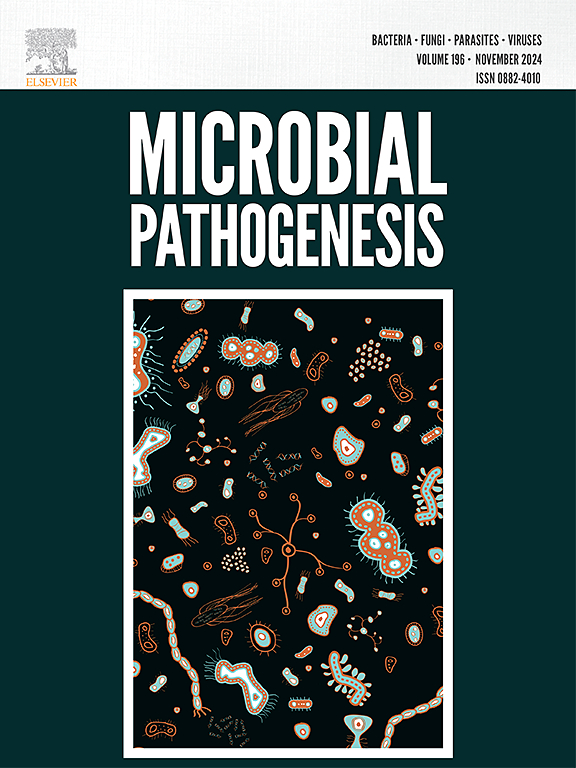Isoliquiritin suppressed LPS/CuSO4-induced pro-inflammatory response on RAW264.7 cell and zebrafish
IF 3.3
3区 医学
Q3 IMMUNOLOGY
引用次数: 0
Abstract
Aim of this study
Isoliquiritin (ISL) as one of bioactive flavonoid from licorice was reported to have bioactivities. This study aims to evaluate the anti-inflammatory properties of ISL on RAW264.7 cells and zebrafish and reveal its possible anti-inflammatory mechanism.
Material and methods
The anti-inflammatory activity of ISL was measured by LPS-induced RAW264.7 cells and CuSO4-induced zebrafish models. The accumulation of reactive oxygen species (ROS) and nitric oxide (NO) in RAW264.7 cells and zebrafish were detected by H2DCFDA fluorescent probe and nitric oxide detection kit, respectively. The nuclear translocation of NF-κB p65 in LPS-induced RAW264.7 cells was detected by immunofluorescence assay. The protein levels of IL-1β, IL-6 and TNF-α in LPS-induced RAW264.7 cells were detected by ELISA assay. The recruitment of neutrophils and macrophages was observed using fluorescence microscope and quantified by ImageJ in the zebrafish inflammatory model. The expression level of inflammation-related cytokines was analyzed by quantitative real-time PCR (qRT-PCR).
Results
ISL reduced the accumulation of ROS and NO in LPS-induced RAW264.7 cells and CuSO4-induced zebrafish inflammatory models, inhibited the nuclear translocation of NF-κB p65 and reduced the release of IL-1β, IL-6 and TNF-α in LPS-induced RAW264.7 cells. Furthermore, the decrease in inflammatory cell infiltration and neutrophil migration suggests the occurrence of inflammatory reactions and the anti-inflammatory effect of ISL in vivo. ISL reduced the expressions of inflammation-related cytokines in LPS-induced RAW264.7 cells and zebrafish inflammatory models.
Conclusion
ISL exerts significant anti-inflammatory effects by reducing the production of ROS and NO, inhibiting the nuclear translocation of NF-κB p65, and inhibiting the expression of inflammatory-related factors. And it is a potential treatment option for inflammatory-related diseases.

异异黄酮抑制LPS/ cuso4诱导的RAW264.7细胞和斑马鱼的促炎反应。
目的:报道了甘草中具有生物活性的类黄酮异黄酮(ISL)的生物活性。本研究旨在评价ISL对RAW264.7细胞和斑马鱼的抗炎作用,揭示其可能的抗炎机制。材料与方法:采用lps诱导的RAW264.7细胞和cuso4诱导的斑马鱼模型检测ISL的抗炎活性。采用H2DCFDA荧光探针和一氧化氮检测试剂盒分别检测RAW264.7细胞和斑马鱼体内活性氧(ROS)和一氧化氮(NO)的积累情况。采用免疫荧光法检测lps诱导RAW264.7细胞中NF-κB p65的核易位。ELISA法检测lps诱导RAW264.7细胞中IL-1β、IL-6、TNF-α蛋白水平。用荧光显微镜观察斑马鱼炎症模型中中性粒细胞和巨噬细胞的募集,并用ImageJ定量。采用实时荧光定量PCR (qRT-PCR)分析炎症相关细胞因子的表达水平。结果:ISL可降低lps诱导的RAW264.7细胞和cuso4诱导的斑马鱼炎症模型中ROS和NO的积累,抑制NF-κB p65的核易位,减少lps诱导的RAW264.7细胞中IL-1β、IL-6和TNF-α的释放。此外,炎症细胞浸润和中性粒细胞迁移的减少表明ISL在体内存在炎症反应和抗炎作用。ISL可降低lps诱导的RAW264.7细胞和斑马鱼炎症模型中炎症相关细胞因子的基因表达。结论:ISL通过减少ROS和NO的产生,抑制NF-κB核易位,抑制炎症相关因子的表达,具有明显的抗炎作用。它是炎症相关疾病的潜在治疗选择。
本文章由计算机程序翻译,如有差异,请以英文原文为准。
求助全文
约1分钟内获得全文
求助全文
来源期刊

Microbial pathogenesis
医学-免疫学
CiteScore
7.40
自引率
2.60%
发文量
472
审稿时长
56 days
期刊介绍:
Microbial Pathogenesis publishes original contributions and reviews about the molecular and cellular mechanisms of infectious diseases. It covers microbiology, host-pathogen interaction and immunology related to infectious agents, including bacteria, fungi, viruses and protozoa. It also accepts papers in the field of clinical microbiology, with the exception of case reports.
Research Areas Include:
-Pathogenesis
-Virulence factors
-Host susceptibility or resistance
-Immune mechanisms
-Identification, cloning and sequencing of relevant genes
-Genetic studies
-Viruses, prokaryotic organisms and protozoa
-Microbiota
-Systems biology related to infectious diseases
-Targets for vaccine design (pre-clinical studies)
 求助内容:
求助内容: 应助结果提醒方式:
应助结果提醒方式:


